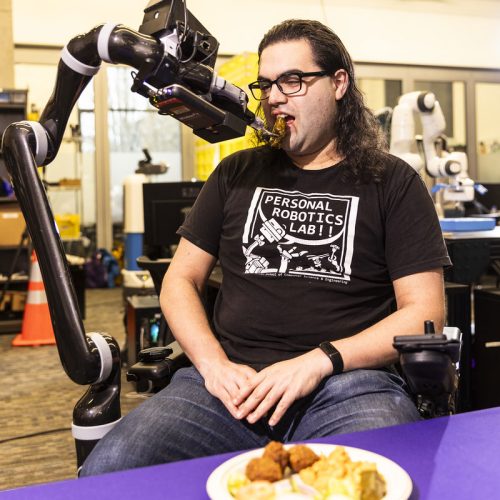Computing Research Association
Research & Innovation
The Allen School advances research excellence from the foundations of computing to emerging applications that are shaping the future of not just our field but also our broader society.
We have deep technical expertise that touches every aspect of computing, and we have a long and proud tradition of interdisciplinary collaboration on cross-cutting research with real-world impact. Our researchers continue to build on this tradition while opening up new avenues of exploration, harnessing the transformative power of computing to develop solutions that benefit people, society and the planet while expanding the frontiers of our field.
Explore Allen School Research
Artificial
Intelligence
Our researchers are driving exciting developments in AI while cultivating a deeper understanding of the science and impact of these rapidly evolving technologies on industries, cultures and communities.
Computing +
Biology
Our researchers are advancing computational methods to help solve biology and medicine’s biggest mysteries while taking inspiration from nature to reimagine what a computer can be.
Human-Centered
Computing
Our researchers are enhancing the ways in which people and communities engage with technology to maximize the benefits and minimize the harms to individuals, groups and society.
Interaction with the
Physical World
Our researchers are tapping into the potential of low- and no-power sensing, communication and interaction technologies to transform how we experience the world around us.
Software & Hardware
Systems
Our researchers are driving innovation across the entire hardware, software and network stack to ensure the computer systems that we depend upon everyday are reliable and secure.
Theory & Models
of Computation
Our researchers are answering fundamental and long-standing questions about the capabilities and limitations of computing, with practical implications in a variety of real-world domains.

Societal Impact
-
Discovery & Innovation -
Education & Opportunity -
Environment & Sustainability -
Ethics & Communities -
Health & Wellbeing -
Safety & Security
Highlights
Allen School News
Allen School News
The Future of Intelligent Hearables
Allen School professor Shyam Gollakota joins the Shift AI podcast to talk about his groundbreaking work on artificial intelligence for augmenting sound — the next frontier in human-AI interaction.
Campus Collaborations
The Allen School partners with units across the UW on interdisciplinary research and education initiatives to advance knowledge and benefit society.
Click on the map below to explore our campus collaborations.



